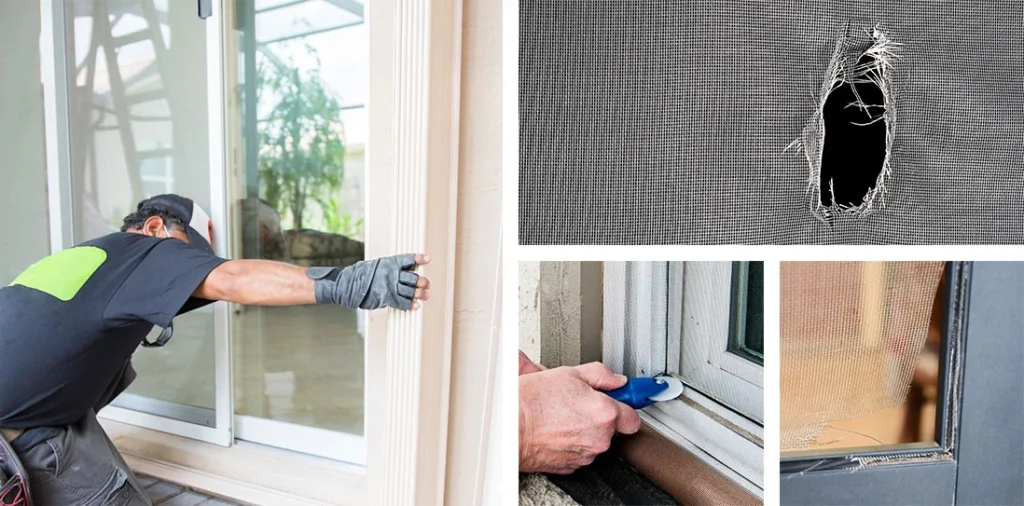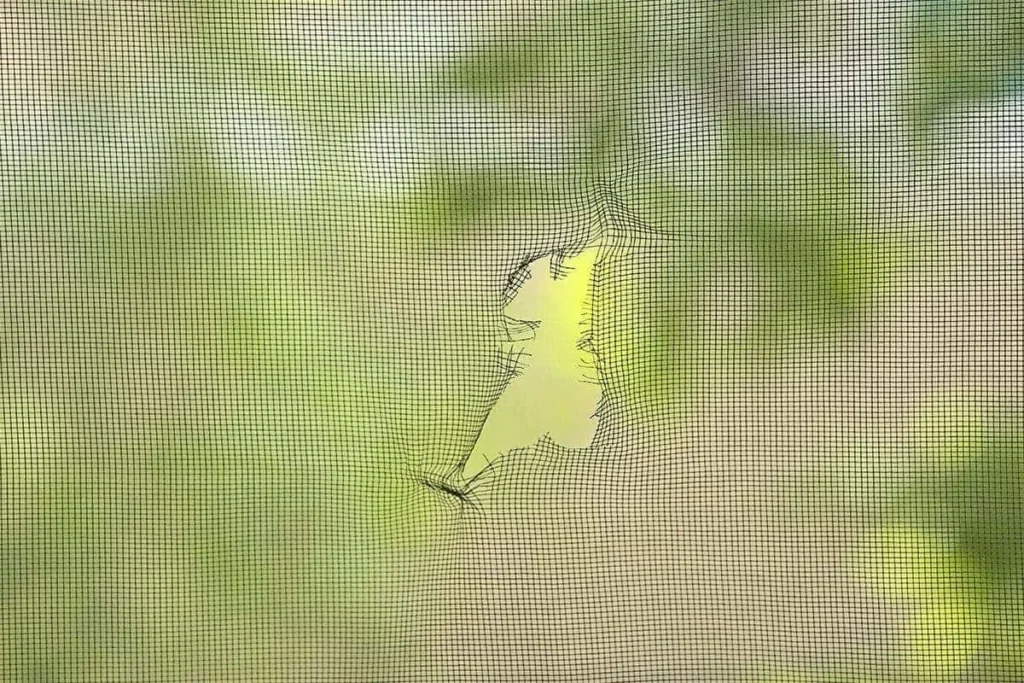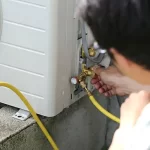Window screens repair is one of the simplest and most cost-effective ways to enhance your home’s comfort and cleanliness. Torn mesh, loose frames, or sagging corners may seem like small issues, but they can impact air flow, allow pests indoors, and reduce your home’s appeal. The good news? You can fix most screen problems yourself—easily and affordably.
Here’s your complete guide to repairing window screens, whether you’re tackling a minor tear or a full mesh replacement.

Content
Why Repairing Your Window Screens Matters
Over time, window screens repair can stretch, tear, or deteriorate due to weather and regular wear. Proper window screen repair can restore airflow, keep insects out, and preserve your windows’ efficiency and look.

Skipping maintenance can lead to bigger issues. But with some tools, mesh, and this guide, you can make your screens look brand new again.
How to Repair a Window Screen Step by Step
How to window screens repair depends on the extent of damage. For small holes or loose mesh, the repair is quick. Here’s how to do it:
- Remove the screen frame.
- Place it on a flat surface.
- Use a spline roller to take out the rubber spline holding the mesh.
- Lay the new mesh over the frame.
- Press the spline into the groove to secure the mesh.
- Trim excess mesh with a utility knife.
With these easy steps, even beginners can master DIY window screen replacement.
Best Tools for Window Screen Repair
Before you begin, it’s smart to gather the best tools for window screen repair. Here’s what you’ll need:
- Spline roller
- Utility knife
- Rubber spline (correct size)
- Replacement mesh
- Screwdriver (for some frames)
Having the right tools on hand ensures smooth repairs and a clean, tight finish.
Types of Window Screen Materials
Choosing the right mesh is crucial. The types of window screen materials available today can meet different needs:
- Fiberglass: Flexible, affordable, and rust-resistant
- Aluminum: Strong and long-lasting, ideal for high-traffic areas
- Pet-resistant: Extra-durable mesh for households with pets
- Solar screen: Blocks UV rays and helps reduce indoor heat
Select your mesh type based on location, usage, and weather conditions.
How to Patch a Torn Window Screen
How to patch a torn window screen is easy when the hole is small. Follow these steps:

- Cut a small patch of mesh slightly larger than the hole.
- Use screen repair tape or a bit of waterproof glue to cover the tear.
- Optional: Sew around the patch using fishing line for extra strength.
This method works well for quick fixes, especially when you’re not ready for a full mesh replacement.
Common Window Screen Problems and Fixes
Homeowners often face issues like:
- Torn mesh
- Loose spline
- Sagging screens
- Bent frames
Fortunately, these common window screen problems and fixes are manageable. Most can be resolved with basic tools and techniques like replacing the spline, tightening mesh, or straightening frames with pliers.
How to Fix Window Screen Frame
If your frame is bent or cracked, here’s how to fix window screens repair frame issues:

- For minor bends, use pliers to reshape the frame.
- Cracks at the corners? Reinforce with metal brackets.
- Severely damaged frames should be replaced entirely.
A sturdy frame ensures your screen fits properly and holds tension.
When to Replace vs. Repair Window Screens
Not all screen damage is worth repairing. Here’s when to replace vs. repair window screens:
- Repair: Small holes, loose spline, minor frame bends
- Replace: Extensive tears, corroded materials, or broken frames
If your screen is older than 10 years or has repeated damage, replacement may be more efficient in the long run.
Cost of Repairing a Window Screen
One reason window screen repair is so popular is affordability. Here’s a breakdown of the cost of repairing a window screen:
- DIY repair: $10–$25 (materials only)
- Professional repair: $15–$50 per screen
- Full replacement kits: $20–$40
Doing it yourself saves money, especially if you have multiple screens to fix.
Benefits of Repairing Window Screens
Wondering if the repair is worth your time? Here are the benefits of repairing window screens:
- Keeps insects and debris out
- Increases airflow and ventilation
- Enhances curb appeal
- Prevents window damage
- Saves money on replacements
Maintaining your screens also helps you spot potential issues early before they worsen.
How to Remove a Window Screen
To repair or clean a screen, you’ll need to take it out. Here’s how to remove a window screen safely:
- Look for pull tabs or tension springs.
- Press the tabs or lift the screen gently.
- Slide or pop out the screen depending on your window style.
Handle with care to avoid bending the frame during removal.
How to Replace Window Screen Mesh
If patching isn’t enough, you’ll need to know how to replace window screen mesh. The process is similar to repairs but uses full mesh replacement:
- Remove old mesh and spline.
- Lay new mesh flat over the frame.
- Press spline into the groove using a roller.
- Trim excess mesh with a knife.
Always choose mesh that suits your climate and usage patterns.
Can You Reuse Old Window Screen Frames?
Yes! If your window screens repair frame is intact, you can absolutely reuse it. But can you reuse old window screen frames safely? Only if:
- Corners are not cracked
- The frame is not warped
- The spline channel is clean
Reusing a solid frame saves time, materials, and money.
Window Screen Maintenance Tips
To reduce the need for frequent repairs, follow these window screen maintenance tips:
- Clean screens seasonally with soap and water
- Check for holes or loose edges every spring
- Store screens in a dry place during winter
- Tighten mesh or spline at the first sign of sagging
Regular maintenance keeps your screens effective and looking great.
Common Mistakes in Window Screen Repair
Avoid these common mistakes in window screens repair:
- Cutting mesh too short
- Using the wrong spline size
- Skipping corner inspection
- Stretching the mesh too tightly
A few extra minutes of prep can prevent wasted effort and poor results.
How to Tighten a Loose Window Screens Repair
A sagging screen not only looks bad—it’s also more likely to tear. Here’s how to tighten a loose window screen:
- Remove the spline and gently pull mesh tighter.
- Re-insert spline while keeping tension.
- Trim the excess mesh.
Even tension ensures the mesh stays firm and functional.
How to Repair Aluminum Window Screens
Aluminum screens can be trickier to repair, but it’s doable. Here’s how to repair aluminum window screens repair:
- Use aluminum patches or mesh tape
- Secure with epoxy or industrial adhesive
- Consider full frame replacement if badly bent
Aluminum resists weather better but may dent or crease under pressure.
Window Screen Repair Without Spline
Missing spline or groove? You can still fix it. Here’s a guide to window screen repair without spline:
- Use adhesive mesh tape or patches
- Apply snap-in frame kits
- Sew mesh using heavy thread or wire
These are temporary solutions but work well for older frames or emergency fixes.
Conclusion
Taking care of your window screens repair needs is easier than it looks—and far cheaper than full replacements. Whether you’re fixing a tear, tightening sagging mesh, or learning how to fix window screen frame damage, having the right tools and know-how makes all the difference.
By following this guide and avoiding common mistakes in window screens repair, you’ll restore your screens to top condition and enjoy clearer views, bug-free airflow, and better window performance for years to come.
FAQs
Can I repair a torn window screen without replacing it?
Yes, small tears can be patched using mesh tape or a screen patch kit. Larger damage may require full mesh replacement.
What tools do I need for window screens repair?
Basic tools include a spline roller, utility knife, replacement mesh, and rubber spline. Optional items include pliers and corner brackets.

My name is Author Name. I post about home improvement ideas and how to make your home look beautiful and liveable. I hope my posts will help you with your DIY projects!












